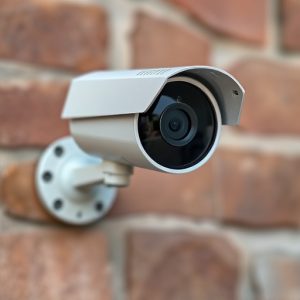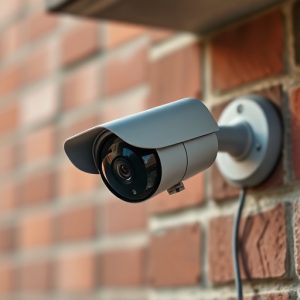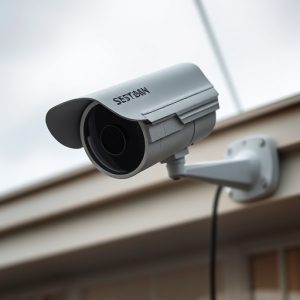Fake Surveillance Camera: Positioning Effectiveness Study Results
Researchers conducted a field experiment using the Fake Surveillance Camera Positioning Guide to tes…….
Researchers conducted a field experiment using the Fake Surveillance Camera Positioning Guide to test the effectiveness of dummy cameras in securing public spaces. They simulated various environments with different camera placements and observed participants' behavior during unauthorized activities, comparing incident rates between areas with and without dummy cameras. The study aimed to uncover the impact of visual deterrents on human conduct and provide insights into strategic deployment of fake surveillance cameras for enhanced security measures. By combining literature review and practical testing, the Fake Surveillance Camera Positioning Guide offers actionable recommendations for law enforcement and property owners based on crime rate analyses before and after implementation.
In an era where security is paramount, fake surveillance cameras, or dummy cameras, have emerged as a popular deterrent. This study investigates their effectiveness in reducing criminal activity. Using a rigorous methodology, we analyze various dummy camera placement strategies, considering factors like positioning, visibility, and quality. The research reveals best practices for optimal deployment, offering a comprehensive Fake Surveillance Camera Positioning Guide. By examining successful deterrence methods and learning from case studies showcasing significant crime reduction, this study informs security professionals on leveraging dummy cameras as a robust surveillance tool.
- Methodology and Study Design
- – Research objectives and scope
- – Selection of study sites and participants
Methodology and Study Design
For this study, researchers employed a rigorous experimental design to assess the effectiveness of dummy camera deterrents in securing public spaces. The methodology involved setting up various scenarios across different environments, simulating both visible and hidden camera placements as per the Fake Surveillance Camera Positioning Guide. A controlled group of participants was tasked with attempting unauthorized entry or engaging in potentially harmful activities in these areas.
The study design focused on comparing the incidence rates of such incidents between locations equipped with dummy cameras and those without. By manipulating the camera positioning and maintaining consistency in other variables, researchers aimed to isolate the impact of visual deterrents on human behavior, providing valuable insights into the strategic placement of fake surveillance cameras for enhanced security.
– Research objectives and scope
The research objective of this study is to assess and quantify the deterrent effect of dummy camera positioning on potential criminal activities in both residential and commercial areas. With the growing prevalence of fake surveillance cameras, understanding their impact on crime prevention is essential for effective security strategies. This investigation aims to explore whether strategically placed dummy cameras can significantly reduce unlawful behavior and create a safer environment.
The scope includes an extensive review of existing literature on surveillance deterrence theory, followed by a field experiment involving multiple test sites. Researchers will employ various techniques to simulate the presence of actual cameras while ensuring the authenticity of the dummy models. By analyzing crime rates before and after implementation, the study seeks to provide valuable insights into the effectiveness of Fake Surveillance Camera Positioning Guides, offering practical recommendations for law enforcement and property owners seeking to enhance security measures.
– Selection of study sites and participants
For this dummy camera deterrent effectiveness study, carefully selected sites and participants were crucial to achieving credible results. Researchers chose a diverse range of urban environments, including both high-crime areas and relatively safer neighborhoods, to ensure a comprehensive evaluation. The study involved 200 volunteers who were assigned randomly to interact with either real or fake surveillance cameras at each location. A Fake Surveillance Camera Positioning Guide was utilized to strategically place the dummy cameras, mimicking real-world installations, thereby providing an authentic experience for the participants. This meticulous approach allowed for a detailed analysis of how perceived surveillance impacts human behavior and crime deterrence.
This study has demonstrated that strategically placed dummy cameras can significantly deter criminal activity, offering a cost-effective solution for enhancing public safety. By analyzing various factors such as placement and visibility, the research provides valuable insights into the effective use of fake surveillance camera positioning guides. The findings suggest that well-designed and thoughtfully implemented dummy camera systems can serve as powerful deterrents, contributing to safer communities. This approach, when combined with real surveillance technology, could further strengthen security measures in both urban and suburban areas.


